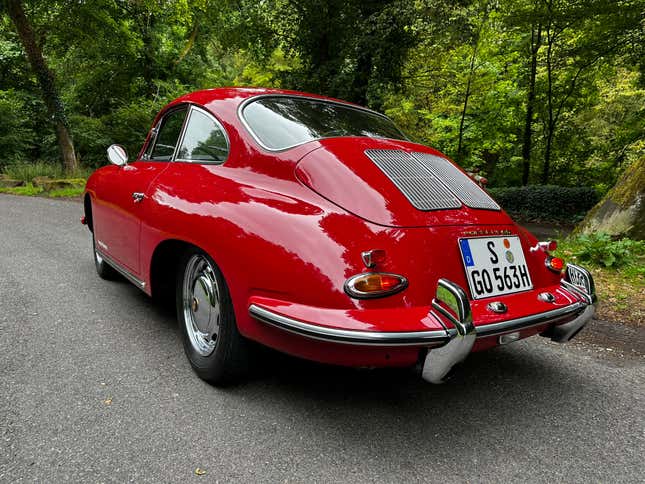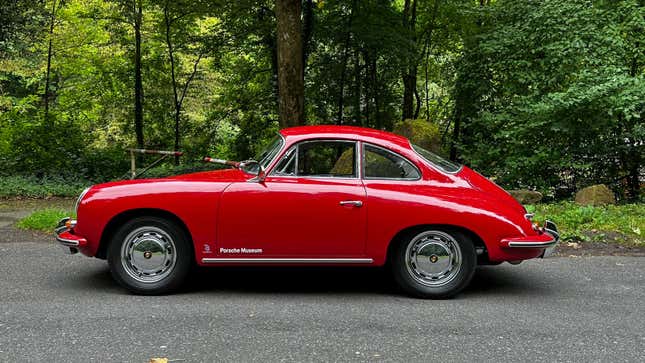
I’m a really lucky dude because I get to drive a lot of Porsches. I’ve driven new 911s and old 911s, 914s, 944s and 928s, Taycans and Macans, and Cayennes and Panameras. It’s a pretty good way to live, tbh, but one production Porsche I’ve never had the chance to dance with is the first one: the 356.
I’ve always loved the 356 from afar, with its weird upside-down bathtub styling and its clattery flat four-cylinder engine, but they’ve always just been too expensive or too rare to get some wheel time in. That changed when Porsche North America kindly asked Porsche in Germany to open up its secret stash of cars to let some journalists drive some of the cars from the collection recently in the Black Forest.
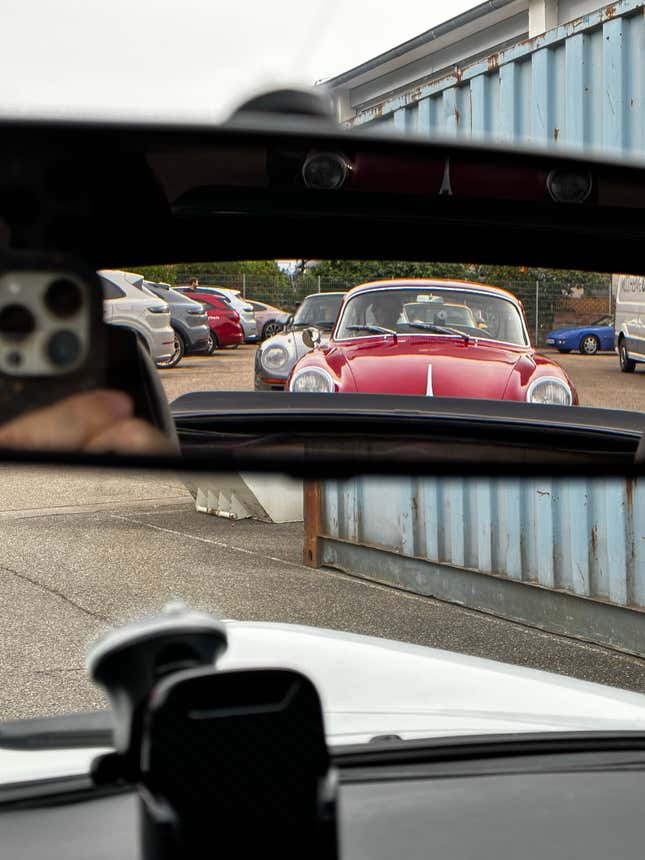
The bright red 1963 356 Super 90 that they’ve wheeled out for me is gorgeous. Being a Super 90, it’s sporting a 90-horsepower engine, which, in 2023, doesn’t sound like a lot, but trust me, it’s plenty. This car is in beautiful mechanical condition, aesthetically gorgeous and Porsche kindly reminds me that it’s a museum piece, so please don’t crash it. This is a good idea not only because it’s an exquisite machine but also because it has no seatbelts, and I would definitely die if I wrapped it around one of the mighty trees of Der Schwarzwald.
It’s also carbureted, and frankly, it’s been around 20 years since I drove a carbureted car from that era – my 1966 Volvo 122S – which means there’s a bit of a learning curve to getting it started. First, the key goes in on the left side of the steering wheel, natch. Then the choke gets pulled, the throttle pedal gets two or three pumps and then turn the key. It grumbles into life and starts clattering away pleasantly behind me. I release the parking brake, which lives under the dash and is unlabeled.
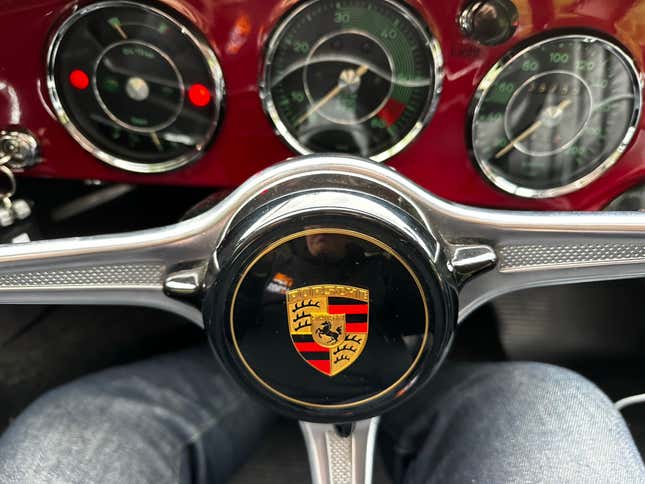
Finding first gear in the might-as-well-be-a-drumstick-in-a-bucket-of-pudding transmission is easy enough, but the almost alarming amount of play between gears and nonexistent self-centering of the shifter means that finding the other three gears will be an adventure. Still, the low-down grunt of the 1,600cc flat-four means that setting off is relatively easy, and my hour or so behind the wheel begins.
Not that it’s surprising, but the 356 Coupe is a softly sprung car. The body moves around enough that it would be unsettling if you weren’t expecting it. Now, that doesn’t mean that the car feels sloppy or loose. It’s actually really easy to place, and the big, thin-rimmed steering wheel and unpowered steering means that you have a good idea of what the front wheels are doing at all times. It’s a car that loves being poked a little, hustled around and made to move, but it also feels like a car that will poke back if you go too far. It’s damp and greasy out, and the undivided roads make for some interesting surprises around corners, so I don’t make too much of an effort to provoke it.
The engine is loud, and you feel it through the controls. It’s also happy to work up and down its limited rev range, making a surprisingly angry sound near the top. Once I figure out the gearbox, which becomes a willing participant once it’s good and warmed up, the little coupe is incredible as I shift from second to third gear on one of the few longish straights and then back down into second under braking (in a straight line because this is old school rear-engine life) and throw it into a corner, maintaining throttle until I’m at the corner exit where I can mat the throttle and work up the gears once again.
It’s pure joy. Unfiltered driving engagement and pleasure beamed straight into my brain. I spend a lot of time laughing and talking encouragingly to the little Super 90. It feels like a partnership or a conversation in a way that even old 911s can’t match with their extra weight and more modern suspension. With a curb weight of just over 2,000 lbs, you don’t feel like you’re trying to cheat physics, or at least not as much as you’re trying to keep your ass in the mostly unbolstered seat.
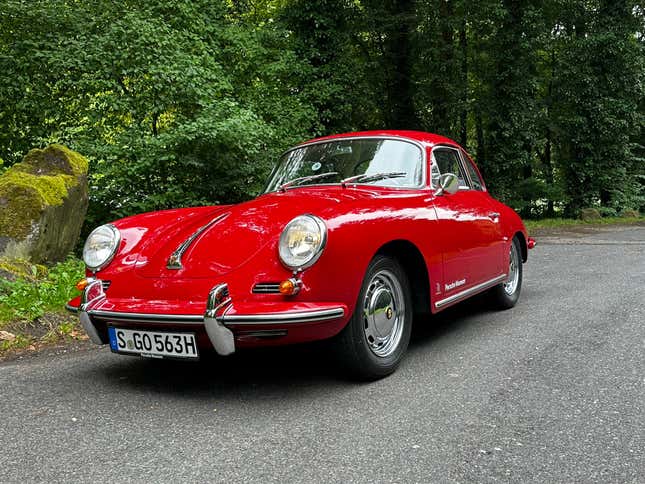
The interior of the 356 is beautiful, with a body-colored metal dash, beautiful green-numbered gauges, and delicate switches and knobs for the handful of creature comforts that the car offers. The carpet – which Singer now famously uses in many of its cars – is rough and scratchy square weave stuff, while the leather on the seats is well-used baseball glove soft. The interior is also surprisingly roomy, even for my *ahem* stout, 6-foot-4-inch frame.
Like I said, I always loved the 356. It’s adorable and iconic with an awesome competition history, but now that I’ve driven one and know it – admittedly a very, very good example – I can say that I’m in love with the 356. I get the appeal of the kind of low-limits, high-stakes driving that you need to get the best out of the car, and all I keep thinking of when I think about my time with the little red Super 90 is that I should have been a banker or something so that I could actually own one.
